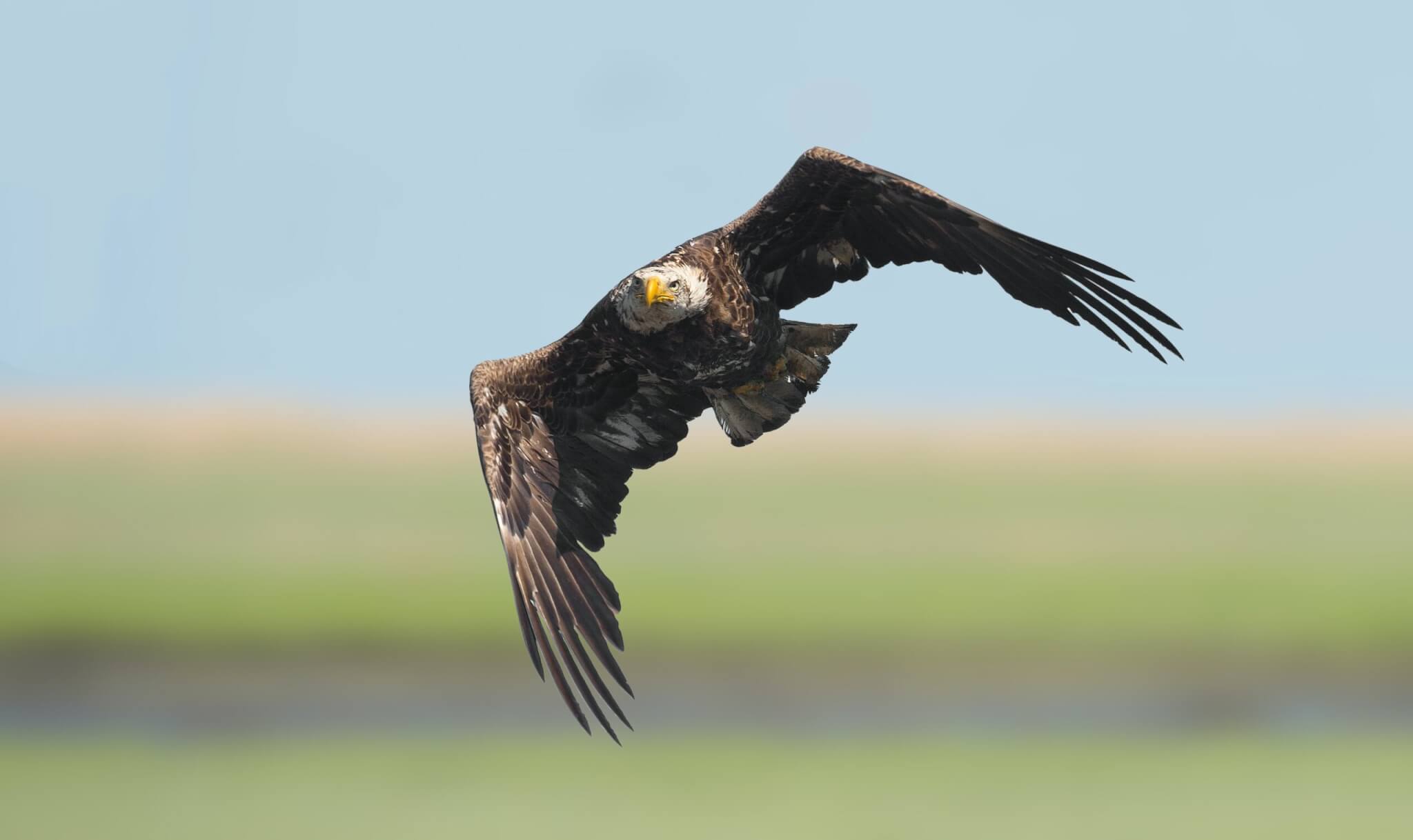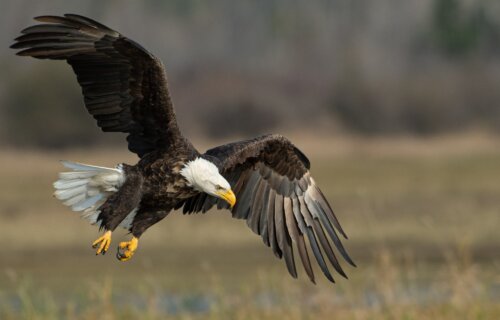ITHACA, N.Y. — It’s hardly easy to find an upside to global warming, but new research out of Cornell University appears to have done just that. Researchers report bald eagles in northwestern Washington state have had to seek new foods and change up their usual diet of salmon carcasses due to climate change. Consequently, these birds have become a “boon” to dairy farmers, deterring pests and even disposing of animal carcasses on their farms.
Study authors describe the relationship between bald eagles and their new food source as mutually beneficial.
“The narrative around birds of prey and farmers has traditionally been negative and combative, mainly due to claims of livestock predation,” says lead author Ethan Duvall, a doctoral student in ecology and evolutionary biology at Cornell University, in a media release. “However, dairy farmers in northwestern Washington do not consider the eagles threats. In fact, many farmers appreciate the services that the eagles provide such as carcass removal and pest-deterrence.”
Duvall and his research team held face-to face interviews with numerous farmers on small, medium and large dairy operations across Whatcom County in an effort to better understand this unique relationship. This project was motivated in the first place by Duvall’s most recent research, which found that eagles were redistributing from rivers to farmland due to the declining availability of salmon carcasses over the past five decades.

“Climate change has altered the chum salmon spawning schedule, causing them to run earlier in the winter,” adds Duvall, who is affiliated with the Cornell Lab of Ornithology. “Now the salmon are spawning when annual Nooksack River flooding is at its peak. The fish who spawn and die are swept away by the high water instead of being deposited on shore where the eagles can easily access them.”
This shift in timing, according to Duvall, has reduced the amount of carcasses available on the local river, not the number of individual salmon. That being said, plenty of rivers in the Pacific Northwest have dealt with dramatic salmon population declines, also eliminating winter resources for local eagles.
To compensate for this drop off in their natural food supply, eagles appear to be turning to the steady stream of dairy farm byproducts produced from the births and deaths of cows, and preying on waterfowl populations that feed and rest in the agricultural areas. Bald eagles are also known to help keep away traditional farm pests like starlings and rodents.
“We know this positive interaction between farmers and bald eagles is not the norm in many other agricultural areas, especially near free-range poultry farms where the eagles snatch chickens,” Duvall concludes. “But this study gives me hope that, moving forward, farmers, wildlife managers and conservationists can come together to think critically about how to maximize benefits for people and wildlife in the spaces they share.”
The study is published in Ecosphere.
